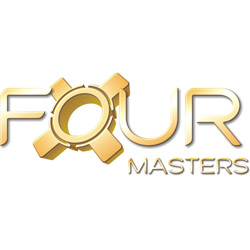16 bit vs 24 bit-depth audio
16 bit vs 24 bit-depth audio
This topic is probably one of the most difficult to boil down for the lay person! Digital audio is a very complex and controversial business due to the apparent need to parameterise what is considered by many to be as psychological a phenomena as it is physics-based! An example of the battle digital audio pioneers still have on their hands is in the fact that continued AB testing of “golden-eared” luminaries still points to the possibility that although the limit of human hearing in terms of frequency response is scientifically proven to be around 20kHz, that analogue systems which will produce in some cases up to 50kHz sound better!
It is necessary to put such unknowns to one side however, and have a pragmatic explanation as to why increasing the number of bits from 16 to 24 in a digital system is or could be desirable and the real world affect this can have on listening pleasure. Digital anything is all about the maths (note the “s” proudly displayed on the end of this word!) Digital signal manipulation is especially so and this can be quite handy in comparing parameters. As you will probably know, music is not all about frequency response (lowest and highest notes that can be heard) but also about dynamic range (loudest and quietest sound that can be heard) sometimes expressed as a ratio of signal to noise. In hi-fi, dynamic range can arguably be said to be more important than frequency response, why? As people become older, their ears work less well and the fall-off in perceived frequency response particularly at the top end is where the biggest change happens. It is not that high frequencies disappear, more that they attenuate or roll off as the hairs that line the oratory organs lie down and refuse to stand up properly again causing your brain to receive reduced information at certain high frequencies. This does not lead to a desire for more high frequencies amongst the older population in fact and bizarrely so, the older listener tends to favour a smoother more rounded top end to the fledgling young listener in my experience – I don’t now why but would be thrilled to hear from anyone who does!
Bit Depth
Back to the plot! When CD was developed the aim was to satisfy the most discerning listener while presenting the most convenient and robust music carrying medium to ever grace human kind. For technological convenience as much as anything a 16 bit depth architecture was decided upon. 16 bit digital technology was already quite well developed and cost effective chipsets were available off-the-shelf. Using 16 bit meant that each sample could convey over 65,000 slices of amplitude information which theoretically allowed a 96dB dynamic range to be achieved. This was felt to be plenty as the mainstream consumer had previously been consuming cassette tape which tended to achieve only 35 – 45dB at best. The human ear is however, capable of discerning a dynamic range of up to 127 dB and a piano for instance can itself produce 104dB or more! In the hyper-critical recording studio environment, 96 dB was never going to be enough. The idea at studio level is to seek no compromise quality in the signal chain and digital audio developers were hard at work attempting to perfect the technology to not merely match what had gone before but to beat it by some distance. 20 bit effects processors and drum machines were overtaken by 22 then 24 bit and 32 bit is now common place in equipment within recording studios. So, how much difference does adding an extra couple of bits make to dynamic range? The answer to this is quite a bit (excuse the pun) in fact by the time we get to 24 bit our 65,536 slices of amplitude information becomes 16,777,216 which is 256 times greater. Important point here: This does not mean your music will sound 256 times better! far from it in fact as the differences become extremely objective however, twice as good is a gargantuan improvement in audio terms!
Sampling Frequency
So, just as we are getting comfortable with the idea of the bits we have to add in another parameter, sampling frequency. This is the amount of times a piece of audio can be sampled or how many component parts we can split the frequency of a sound into. With CD a sampling frequency twice the value of the maximum audible frequency was chosen however you will have come across different sampling rates when ripping CD’s and especially when converting from WAV to MP3 for instance. I previously mentioned that although the limit of human hearing is 20kHz (ish) there is likely to be a psycho-acoustic recognition of information way above this figure, which is why in very simplistic terms, sampling frequencies of 96kHz tend to go hand-in-hand with 24 bit audio.
In Conclusion
Whether the above over simplifies the science and maths of this topic or not, and notwithstanding the current limitations in digital to analogue conversion techniques and the use of “dither” in digital music coding the plain fact is that music encoded and conveyed in a 24 bit, 96 kHz architecture is streets better than audio converted by a 16 bit, 44.1kHz architecture. The major noticeable difference will be in dynamic range which governs the “life” “ambience” “timbre” “positional information” contained within a piece of music which is why audiophile car audio company Audison has gone to extreme lengths to add a 24 bit, 96kHz source unit to its array of world beating car audio products. Called bit Play HD, this device is available imminently from any FOUR MASTER or FOUR outlet and if you want the music you love to come alive in your car, you should really consider including one within your next system upgrade or even your current one.
Content provided by:




